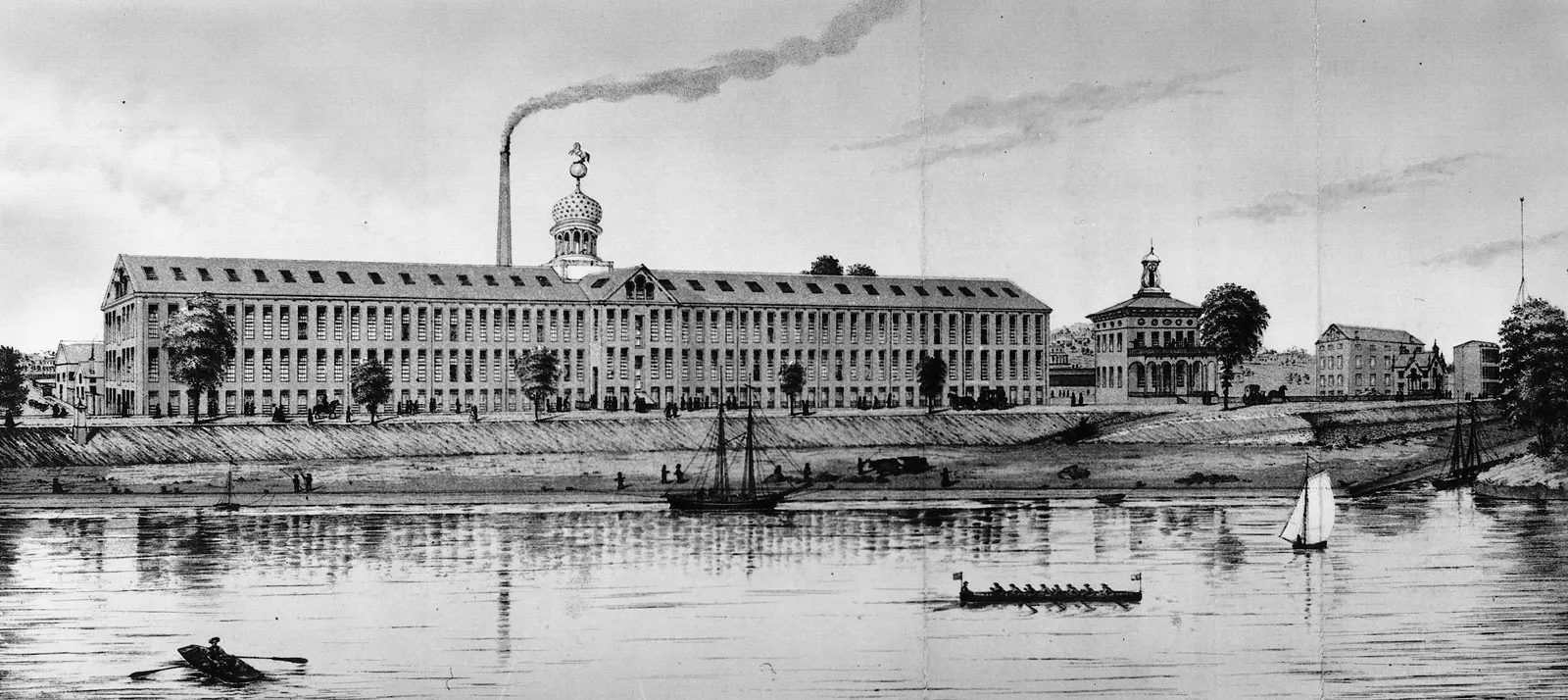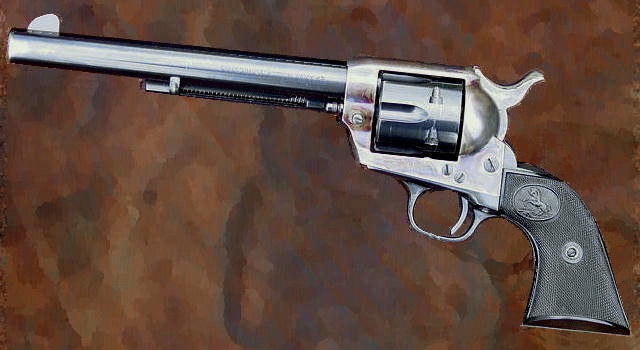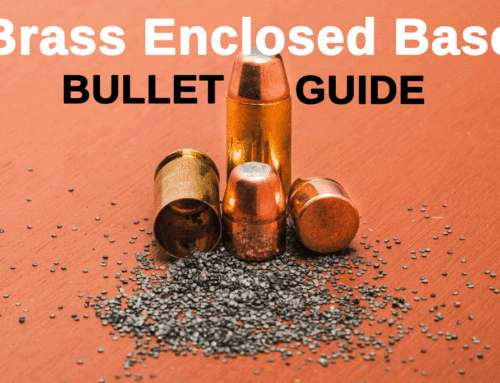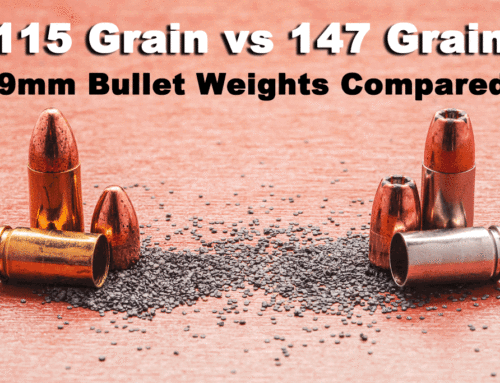“God created men, Col. Colt made them equal”
One of Samuel Colt’s very first possessions was a flintlock pistol that had belonged to his grandfather. He surely pored over every square inch of the old flintlock. He no doubt pretended to shoot quite a few things with it as well. We like to imagine he once pointed his toy at something shootable and said “BANG BANG BANG BANG BANG BANG!” – only to be corrected by an adult who understood the limitations of a flintlock. “I’ll show you how many bangs a pistol can really have,” the young Colt might have thought in response.
Samuel Colt’s Childhood
Samuel Colt was born in Hartford, CT on July 19th, 1814. His father, Christopher Colt, who was a farmer before he became a fabric merchant, indentured Colt to a farmer in nearby Glastonbury, CT when he was 11. It wasn’t an act of destitution. Colt earned his keep by doing chores in the wholesome countryside while attending school.
Colt took a keen interest in the sciences – particularly those behind steamboats and gunpowder. He wished to become a great inventor one day. So, he took his education in pyrotechnics into his own hands by making small bombs and fireworks. Colt’s attempt to impress his classmates on July 4th, 1830 wound up causing a fire large enough to prematurely end his days at boarding school.
Those were different times. Instead of facing a lengthy punishment and his name’s addition to multiple watchlists, Colt was sent away to become a sailor. The inventive young man took a natural interest in all of his brig’s mechanical contraptions, but it was the windlass which most caught his interest.
A windlass is a device used to hoist anchor line. It includes a gypsy (which is the wheel the line wraps around) and a ratcheting mechanism – a combination of features Colt believed to be practical for other applications.
The First Colt Prototypes
Colt returned to Ware, MA in 1832 to work at his father’s textile plant. The old man graciously funded a couple of prototype firearms (one of which exploded during testing), but his patronage ended there. Eager to fund further development, Colt took the natural next step of becoming a traveling laughing gas salesman. He excelled at it, and soon became “the Celebrated Dr. Coult” – a popular public speaker whose theatrics occasionally included carefully constructed pyrotechnics.
Colt’s celebrity was all in service of his real goal: to invent the “impossible gun.” He contracted some gunsmiths in Baltimore, MD to bring his vision to life, ultimately abandoning a double-barrel design concept for a fixed one, with a rotating cylinder that would align its chambers with the barrel with every click of the hammer. Once he and gunsmith John Pearson perfected the prototype, Colt was ready to patent the revolver.
The Colt Revolver Arrives

Colt Paterson Percussion Revolver, No. 5, Holster Model, serial no. 528 (On display at the Met Fifth Avenue gallery 372.)
Colt secured the British patent for his invention first. Doing so maintained his subsequent American patent’s validity in the United Kingdom. The Colt Paterson, a revolving breechloader with a folding trigger mechanism, received its proper American patent on February 25th, 1836. The revolver entered production quickly, and was produced at the same rate thanks to its interchangeable parts. A line of assembly men could piece together a Colt Paterson almost as quickly as they could pass one between them.
Colt’s monopoly on the revolver remained intact until 1857. For over two decades he alone could legally produce what would eventually become respected as the most effective pistol in the world.
It wasn’t smooth sailing right away, however. The Panic of 1837 deprived Colt of the funding his new enterprise needed for machinery, and the Militia Act of 1808 effectively barred state militias from purchasing firearms that the United States military had not already adopted. He did demonstrate the revolver to President Andrew Jackson (a duelist who could appreciate such things), but ultimately failed to convert that meeting into military sales. Colt’s lavish business expenses did not improve his professional situation. Things looked up when Colt began selling revolvers and revolving rifles to the Floridian war effort against the Seminoles, but a lost payment for a shipment of those firearms resulted in the Patent Arms Manufacturing Company’s closure and liquidation.
The Undauntable Colt
Colt was shaken by his failure, but not defeated. He got back on his feet by inventing and manufacturing a type of waterproof cable at precisely the time Samuel Morse needed one. He nearly began selling underwater mines to the U.S. government, although John Quincy Adams put a stop to a project he deemed “unchristian.”
Colt then began fine-tuning the tinfoil cartridges he had originally developed for his revolvers. These were far more resilient against moisture than contemporary alternatives which used skin or paper as rudimentary cases. He sold hundreds of thousands of his metallic-cased musket cartridges to the U.S. Army in 1841 – which, combined with the prospering telegraph industry, provided just the kind of boost that puts an enterprising man back on his feet.
Colt still believed in his revolver. He gradually developed a prototype for a new and improved model that could chamber larger-caliber ammunition. This “Holster revolver” was presented to the War Department for consideration. It was greatly appreciated by Captain Samuel Walker of the Texas Rangers, who had already witnessed the revolver’s effectiveness firsthand during a battle against the Comanches. In 1847 Captain Walker ordered 1,000 revolvers for use in the Mexican-American War. At the captain’s request, Colt increased the revolver’s cylinder capacity from five to six and made it powerful enough to drop a horse in one shot. The Colt Walker revolver put Colt back in the firearm business.
Colt’s Patent Fire-Arms Manufacturing Company

The Colt Patent Firearms Manufacturing Co., Hartford, Connecticut in 1866. (Image courtesy: U.S. Library of Congress)
Colt chose Hartford, CT as the location for his new enterprise. There he produced Colt Dragoon Revolvers using old Colt Walker parts. The revolvers were more accurate and less powerful, and were popular both as weapons of war and as tools for personal protection during the era of westward expansion. General Sam Houston, General Thomas Jefferson Rusk and Lt. Bedley McDonald all testified to the Colt’s revolver’s efficacy in battle, which spurred Colt to introduce the Navy Revolver in 1851. He sold these to the U.S. military, and also found a market in Mexico once the war with its government had ended. Rising political tensions in Europe a few years later were similarly beneficial to Colt’s sales.
Colt thrived thanks to his fiercely protected patent, successful marketing strategies and continued research into making his revolvers more affordable. He did unwisely ignore an idea presented by one of his gunsmiths: a revolver which permitted the loading of cartridges into the rear of the cylinder. Smith & Wesson wound up purchasing that gunsmith’s patent, which in turn prevented Colt from manufacturing cartridge firearms for nearly two decades.
The Colt Armory was an interesting place to work. Employees enjoyed laidback 10-hour work days, hour-long lunch breaks, and even a breakroom, but they were dismissed if they were late for their shifts (or brazen enough to suggest design improvements). The factory boasted the world’s first commercially viable special purpose machinery, which was instrumental to achieving mass production. The assembly line concept Colt experimented with earlier on had now become his full-blown business model.
Colt married Elizabeth Jarvis on June 5th, 1856. They would have five children together (two of whom went on to eternal life during infancy).
Colt the Tycoon
With the opening of his second factory in London, Colt became an international businessman. That operation lasted only four years due in part to Colt’s stubbornness: He would not change his open-top single-action’s design to fit the British military’s specifications, and boxed up his London plant in 1856 after lackluster sales.
In order to gain an audience with Europe’s nobler customers, Colt convinced the governor of Connecticut to make him a lieutenant colonel. He touted that title as he gave away free revolvers to influential European officials and celebrities. Colt also gilded his revolver’s reputation by commissioning George Catlin to paint scenes depicting its use on the frontier, as well as several writers to factor it prominently in their stories. Fittingly, Colt also gifted revolvers to any writers who denigrated his competition.
Just like he exploited rising tensions in Europe, Colt sold firearms to both the North and the South during the buildup to the Civil War. In response to accusations of being a “Southern sympathizer” (which is still an unforgivable sin by contemporary Yankee standards), Colt had himself commissioned as a colonel of the 1st Regiment Colts Revolving Rifles of Connecticut. Colt envisioned leading an army armed with his own revolving rifles, although it would never come to fruition. He was discharged on June 20th, 1861.
Colt’s Death

Samuel Colt died of gout on January 10th, 1862. He died 11 years before the U.S. Army would make the Colt Single Action Army his company’s most iconic pistol. That came 97 years before Colt Manufacturing became the first company to mass produce the AR-15 rifle. But the man caught a welcome glimpse of his company’s success all the same. Colt’s estate was worth approximately $15,000,000 at the time of his death. That’s nearly half of a billion dollars in today’s money.
Today, you’ll find dozens (maybe more) calibers and references to Colt’s ingenuity. For instance, 45 ACP (automatic colt pistol), 45 long colt, .380 automatic colt pistol, and more.






Leave A Comment